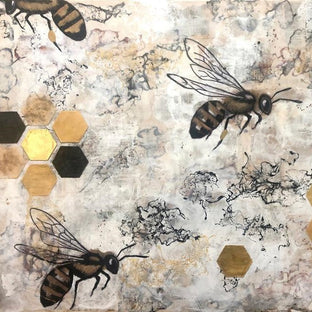How to Care for Your Encaustic Art
By
UGallery.com
April 03, 2025



Burning beeswax. It's not a topic we commonly broach, but it's part of the fascinating process of creating encaustic paintings. Add in some pigment and a damar resin along with a heating device and you've discovered the formula artists incorporate to produce this one-of-a-kind art.
We share this information because it offers important insight into how customers who purchase encaustic art should care for their paintings. As part of our ongoing how-to series relating to caring for various types of artworks, we're happy to pass along what we've learned through research about encaustic paintings.







